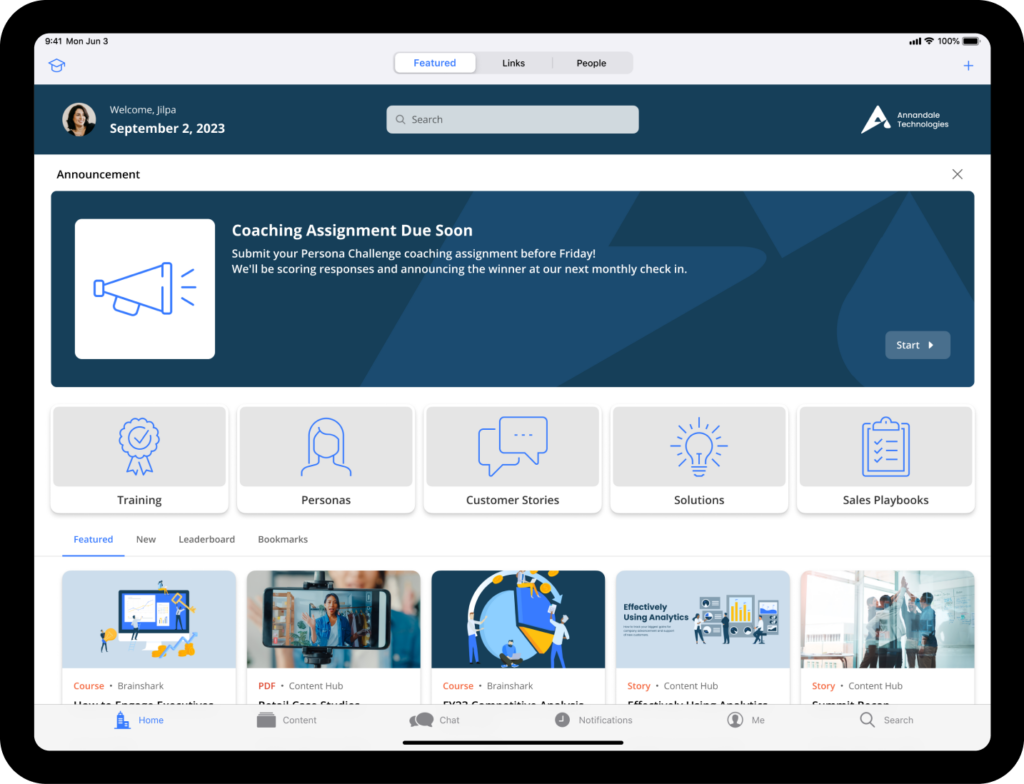Sales tools give go-to-market teams the power to perform everyday. They boost productivity, automate processes, and give critical insights into customer engagement.
But it's overwhelming when your sellers (and marketers) have dozens of tools at their disposal.
Which one do they log into for product updates, to upload meeting notes, or monitor buyer engagement? Where do they find sales collateral or training materials? Which platform do they pull reports from?
Without a simple answer to these questions, key information gets lost in translation, your people get frustrated, and half the software becomes shelfware — which ends up eating away at productivity and profit, defeating the purpose of your initial investments.
Below are some facts and figures pulled from sales tech experts that will help you recognize sales tool overload in your organization, better understand the problem, and ultimately solve it.

References
- [Forrester] Predictions 2023: B2B Marketing And Sales
- [Forrester] Introducing The Forrester Digital Sales Experience Manifesto: Five Guiding Principles For Delivering Greater Value From Sales Technology
- [Allego] The Sales Enablement Technology Report. Allego commissioned an independent research firm to survey 330 B2B sales leaders about their use of multiple sales enablement tools. The margin of error for this study is +/-5.3% at the 95% confidence level. Respondents were screened and sampled in partnership with Lucid, a global survey panel provider.
- [Salesforce] State of Sales – Fifth Edition. Salesforce Research surveyed more than 7,700 sales professionals worldwide. Data in this report is from a double anonymous survey conducted from August 24, 2022, through September 30, 2022.
- [Sales Hacker] State of the Sales Tech Stack 2023. In September of 2022, Sales Hacker conducted a global survey of 976 sellers and sales leaders in the Sales Hacker community to investigate their use of sales technology and how it impacts their team’s ability to hit their revenue targets.
Primary reasons to consolidate your sales tech stack
Simplify operations
A sprawling array of sales tools and software can lead to chaos and inefficiency within your sales team.
Each tool may require separate logins, different user interfaces, and distinct training processes, resulting in wasted time and increased chances of errors.

Pictured: Unified Bigtincan platform for go-to-market teams
Consolidating your sales tech stack brings all your essential tools under one roof and gives reps a single point of entry, simplifying operations and creating a unified — and overall less frustrating— experience for your sales and marketing teams.
Make the sales process easier for reps
From prospecting to closing deals, sellers are constantly juggling multiple tasks. Managing multiple tools just complicates an already complex situation.
A consolidated tech stack allows sales reps to access all the necessary tools and data from a single platform, streamlining their workflow and reducing friction in the sales process. This ease of use can boost morale, enhance productivity, and ultimately lead to improved sales performance.
See also: Simplifying sales enablement for sellers and managers
Save sellers from switching between tools
Constantly switching between different tools disrupts your sales team's focus and hampers their productivity.
With a simplified tech stack, sellers can seamlessly transition between different stages of the sales process without leaving the main platform. This continuity fosters a more coherent and efficient sales process, ensuring that sellers stay focused on what matters most – closing deals.
Help sellers become more time efficient
Time is a valuable resource — especially in sales — and every moment saved can translate into more opportunities and revenue.
By eliminating the need to navigate through multiple interfaces and reducing the time spent on administrative tasks, you empower your sellers to allocate more time to building relationships with prospects and engaging in more strategic tasks.
Related: Taking back seller time to win more opportunities
Secondary reasons to simplify your sales environment
Data integrity and insights
When data is spread across various tools, ensuring its accuracy and consistency becomes challenging, and solving the puzzle of where data came from and which is correct becomes time-consuming.
You can more easily maintain data integrity by having a centralized database for all customer interactions, leads, and sales activities. This, in turn, enables more accurate reporting and analytics, providing valuable insights to inform data-driven decisions and sales and marketing strategies.
Reducing costs
Using multiple sales platforms also comes with a significant financial burden.
Each tool requires its own subscription, and the costs can quickly add up. Consolidating into a single platform allows you to eliminate redundant tools, negotiate better pricing with a single vendor, and reduce overall software expenses. Moreover, the enhanced efficiency gained through consolidation can lead to increased sales, further justifying the investment.
From simplifying processes and enhancing seller efficiency to improving data integrity and cutting costs, the benefits are undeniable.
Ready to simplify your sales environment (and make your sellers’ lives easier)?
You can quickly consolidate much of your environment under a single, easy to navigate, and branded platform that is customized to your team’s processes. Get in touch for guidance.
